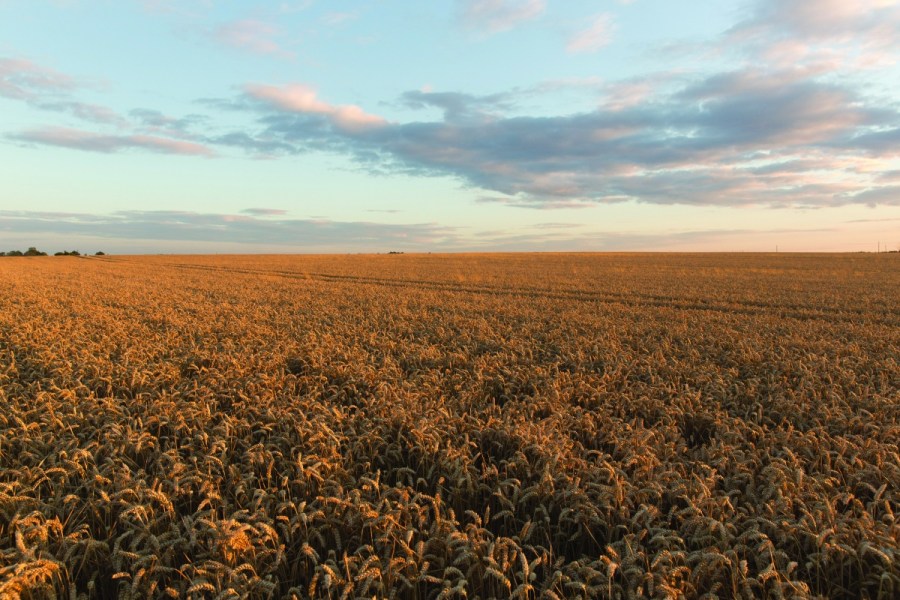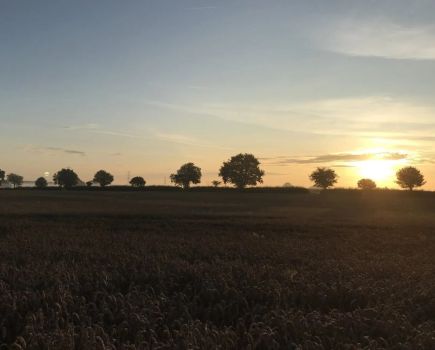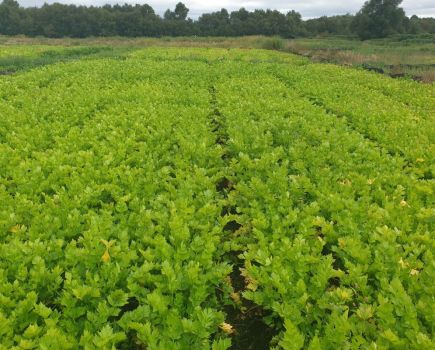Transitioning to a regenerative system of arable production requires the collaboration of an array of techniques. CPM explored the strategies, opportunities and potential barriers in a recent survey…
It’s all about working smarter, not harder.
By Charlotte Cunningham
There’s a lot of potential to be more regenerative in agriculture, and beyond all the headlines some of the fundamental principles behind the approach offer a wide range of benefits and opportunities for both growers and the wider environment.
Defined at last year’s Groundswell event as ‘a direction of travel, not an absolute’, it seems that a regen approach could take a number of forms. So what exactly does ‘regenerative’ farming look like and how can growers optimise the transition to a more regenerative approach while maintaining farm profitability?
In a recent survey conducted by CPM and Limagrain, 37% of growers said that, to them, regenerative agriculture means improving soil health and minimising soil disturbance. A further 35% said regen is about reducing inputs through improved soil and plant health, while a third (33%) believe a regenerative approach can be defined as simply a more sustainable way of producing food.
Nick Wall, independent agronomist with Crop Management Partners believes that transitioning to or adopting regen agriculture practices all starts with switching on the soil’s biology. “Soil is the fundamental factor in arable production in general, but specifically for those who are looking to farm in a more regenerative way.
“Healthy, active soils means an increased opportunity to get all the soil living organisms, from bacteria to earthworms, to do a lot of the heavy lifting. In turn, this results in better access to nutrients – like phosphate – which often get locked up in the soil. It’s all about just getting this soil biology working for you, rather than against you.
“Improving soil health sets you on the path to better plant health and then to being able to think about reducing inputs – without the risk of yield penalties.”
Ron Granger, arable technical manager at Limagrain, concurs but stresses that there’s not one definitive action that does – or doesn’t – grant you membership into the regen club. This is a view echoed by 60% of growers who said for them this approach is a combination of optimising soil health, enhancing the farm ecosystem to include livestock and reverting back to traditional farming practices – all while trying to achieve a more sustainable way of producing food.
CPM’s 2020 Climate Change Champion, Al Brooks, is practicing what would be very much classed as a regen-system at the Faccombe Estate in Hampshire, where he incorporates a mixture of techniques. But he takes a very humble view and says that despite the fuss around the regenerative movement at present, it’s simply a case of going back to a more traditional way of crop establishment. “The funny thing is, we’ve actually been farming regeneratively in this country for hundreds of years – regen ag is simply a return to traditional farming.
“The difference now, however, is that we have the science and technology available to make those practices more efficient, but also to understand the impact of what we’re doing and why we’re doing it. For example, the arrival of carbon accounting and related technologies.”
Ron agrees: “It’s not new tactics, it’s just going back to the way things used to be. We’ve moved away from this over time, overworking soils and not putting enough back into the ground, which is why some soils have become so exhausted. If we look at those still operating mixed systems, they’re not tending to have the same issues that exclusively arable farms are facing.”
This perhaps more traditional approach is being upheld by 85% of growers who said they’re currently employing what they considered regenerative agriculture practices.
Exploring these practices further, topping the list was a greater focus on improving soil health via the use of more manure/compost and monitoring of soil health indices etc, followed closely by direct, strip or min tillage – which was a practice of choice for 84% of growers.
Over half (53%) said they’re also reintroducing livestock into the rotation, and this was supported by 52% of growers who are including grass and mixed clover leys in the rotation – with some 23% of these growers having more than 100ha of ground in grass/clover.
“Diversity is key for regenerative farming,” says Nick. “Cropping wise, wide rotations are often common practice and I’ve certainly seen an increase in grass leys within arable situations.
“Not only does this lend itself well to incorporating livestock into the system, but moving away from strictly combinable crops also opens the door for a number of stewardship options. Then there’s, also the weed and disease benefits of having more diverse rotations.”
By contrast, within the 15% of growers who said they weren’t currently incorporating regenerative techniques and strategies, the main reason noted for doing so was the requirement to replace machinery, followed closely behind by a view that it just wouldn’t work in their rotation where it includes root crops.
So is this a potential barrier for regen?
“To be successful, you have to want to make the system work and be prepared for the fact it’s not going to necessarily be a smooth course to success, nor will that success happen overnight,” warns Nick.
“For anyone who is potentially interesting in changing their approach, there’s a wealth of information out there which can be easily accessed. The Groundswell event is a great example of this, and BASE UK is worth looking into too. This is a group of brilliant farmers who are only too happy to share their understanding and learnings from transitioning to a more regenerative way of farming.”
To ensure success, Al says a change of mindset is often required. “I’ve got stubble turnips in my rotation, so it’s a myth to think you can’t grow root crops and run a regenerative system,” he laughs. “Instead of just thinking ‘this won’t work for us’ I think it’s better to instead look at is as ‘have we got our head around how it could work?’. I think regenerative practices of some shape or form will find a place on every farm. Sometimes, it’s just about altering your mindset and approach.”
While machinery cost is an understandable concern, Nick adds that it’s becoming more possible to convert existing kit, so this could be an ‘easy-win’ for someone wanting to move to a less invasive tillage system, he adds.”
However, Al believes this investment shouldn’t be such a concern for those in the early stages of a transition. “It’s easy to get put off by thinking changing the system is going to require a lot of investment. However, there’s a really interesting book which covers the 10 steps of moving from a plough to a no-till system and step nine is buying the drill. A transition won’t happen over night and there are plenty of tools – like changes to cropping, using more manures and reducing inputs – which mean you can change the strategy without being weighed down by depreciation in the early stages.”
Ron adds: “As we’ve said, regen will mean different things to different farmers, but the ethos is driven by a want to make things more sustainable. So to achieve this, I think it’s worth stressing again that you don’t have to do everything, you just have to do something better.”
Not only are there environmental benefits of a return to more traditional farming tactics, but Al believes it can improve the bottom line too. “There’s a saying ‘you can’t be green if you’re in the red’, and that’s incredibly true.
“We’ve found that we can influence margins and cropping by the virtue of the land, machinery and inputs we’ve got. While sometimes things look expensive to do, and the return might not be obvious, we always find these strategies help us save hand over fist somewhere else in the business.”
For the shift towards a more sustainable way of farming to have maximum uptake, it requires input not only at field level, but also from the wider chain – such as seed breeders and machinery manufacturers – to ensure growers have access to the tools they need to make regenerative farming a profitable operation too, believes Ron.
Thinking about varieties, and specifically wheat, it seems that yield is no longer the only king for growers looking for a variety to suit a regen system. Instead, disease resistance was ranked as most important by 58% of growers, followed by rooting ability (42%) and then yield (41%).
At the other end of the scale and perhaps rather interestingly, 21% of growers said second wheat performance wasn’t an important agronomic factor for variety selection.
“It’s important to really think carefully about the variety you’re choosing, but there are plenty of good options out there now – ones which have very high inherent resistance, for example,” believes Nick. “The caveat to this, however, is that we have seen quite spectacular resistance breakdowns over recent years, so it’s also worth considering not putting all your eggs in one basket.”
He adds the regen systems often suit specific drilling dates, and varieties should align with this. “There’s often far less disease when drilling later, if that’s a possibility on your farm.”
Then there’s varieties which have specific tolerances, such as BYDV, which could be worth considering if this is a particular risk on farm, notes Nick. “As a starting point, the AHDB variety selection tool is a fantastic resource for looking at all traits to help growers mitigate risks as much as they can.”
Variety choice is often a challenging decision on farm, with the AHDB Recommended List colloquially heralded as the bible at the heart of a lot of decision making. However, when it comes to selecting a wheat variety that’s fit for purpose in a regen system, 43% of growers said the data available from all sources isn’t extensive enough.
These growers cited having information on trials related to reduced fungicide rates, yield with low or no nitrogen applied, a rooting score and data on growing blends as being useful to aid this decision making.
However, Nick believes there is a wealth of information available. “The RL is a good starting block, but beyond that, there are lots of local trial sites up and down the country which will give growers a good insight into how a variety might perform under certain systems. If you’re focused on reducing inputs, then it’s worth paying extra attention to untreated plots.”
Al adds that regen ag in its latest form has only come to the forefront over the past few years, so there’s not going to be the plethora of information available yet as there is for conventional systems. “That said, there’s still plenty of sources of knowledge out there – speak to your agronomist, look at trials data and visit other farms. You can use this as a baseline to then compare what may or may not work for you.”
Ron says that delving deeper into the ability of crops under direct drilling and lower input scenarios is something that Limagrain will be look at over the coming seasons. “The hunger for knowledge hasn’t been there previously and as plant breeders, we haven’t pulled varieties apart for this situation yet. But we recognise that variety type is going to form an even more important part of decision making and we’ll be exploring this further. In the meantime, varieties like LG Typhoon – which has a very high untreated yield and robust disease resistance, both as a seedling and adult plant – is likely to be an attractive option for those growing crops under a regen system.”
Nick sums things up and says there’s a real opportunity for growers at present. “It’s such an exciting time for our industry and such potential to reshape the future of farming. Even with challenges such as the high fertiliser prices at present, it presents an opportunity to stop and think about what we’re doing to ensure we’re farming in both a cost-effective and sustainable way.
“Climate change and net zero is very much at the forefront of priorities and, as advisors, we’ve got to start thinking more about how we can reduce the consequences of our actions and how we recommend and advise farmers. It’s a really exciting time.”
More than just wheat…
Rather than chasing ‘pub-yields’ Al says for him cropping comes down simply to margin. As such, he believes it’s important to consider other crop types than just wheat. “Being regenerative is all about long-term sustainability. I’m a custodian of the land and I want this business to be here and viable for the next generation. I’m not so concerned about tonnes per hectare, it’s the margin that’s important. So my advice would be to expand your rotation and look at how you can bring diversity in. Consider different break crops and alternative to second wheats – I grow poppies, for example.
“That said, there’s likely to be limits to how far you can expand this – for example, we just can’t grow peas here – but it’s all about working smarter, not harder.”
A blended approach?
As moving away from reliance on inputs is a key priority for regen growers, it was of little surprise that 39% of growers said they either already growing or considering growing a blend of wheat varieties.
And it’s not just a regen perspective that this can be useful for, says Nick, with a reduced chemical armoury and efficacy meaning growers, in general, are having to be more creative with how they tackle disease control.
For anyone sat on the fence, he recommends setting up a trial on their own farm. “Try a field and see for yourself – compare half conventionally grown and the other using a blend with reduced inputs. The important consideration is whether you can make it work without detriment to production.”
Winner announcement
Congratulations to our three winners George Atkinson, Oliver Stones and David Buchanan who responded to the CPM/Limagrain survey on regen ag and have won the fabulous prize of a place on a European study tour this autumn.
All three responded to the survey and completed the tie-breaker question, which asked respondents why they have or are interested in adopting regenerative practices on farm.
The trio will now accompany Limagrain to Demark next spring to visit leading research institutions, plant breeders and farmers, as well as the opportunity to work with the breeder to test some of the latest varieties in their own farm system.
CPM will be following this journey, as the industry seeks to glean a better understanding of which variety characteristics are most suited to a regen system. Watch this space for more information…
To take part in the next survey, make sure we have the correct details for you by emailing angus@cpm-magazine.co.uk




